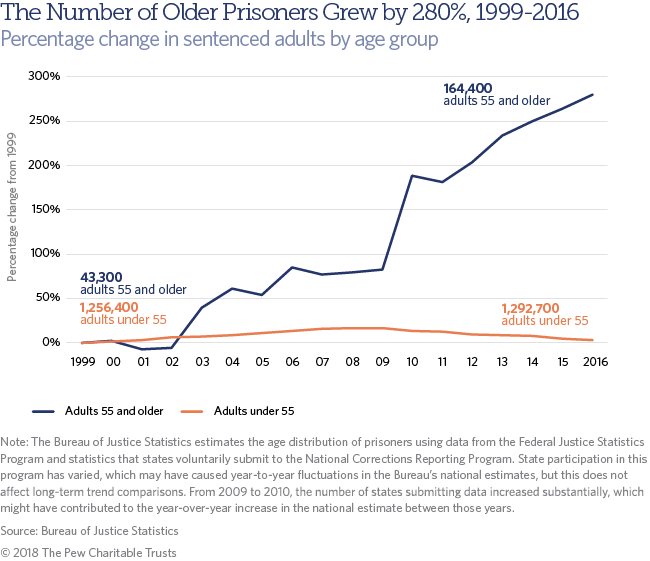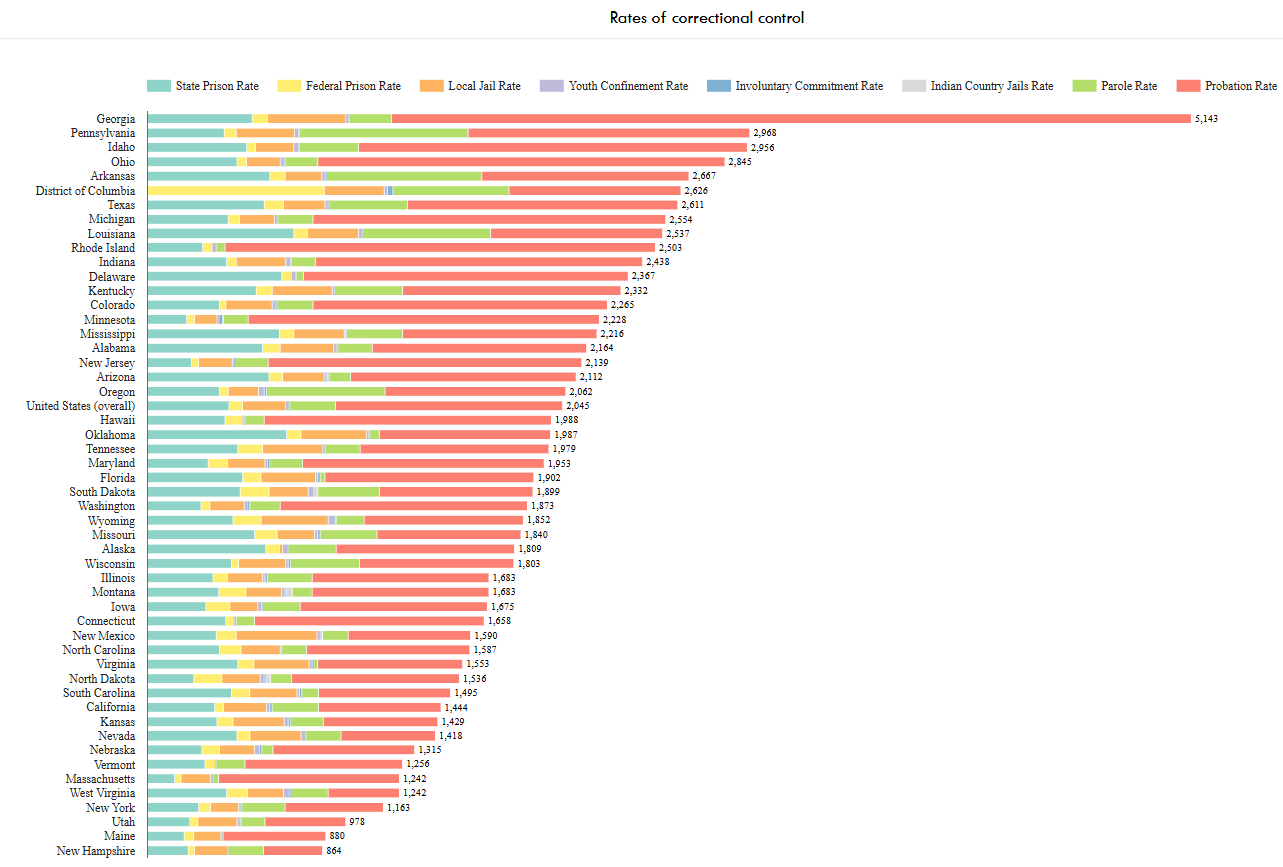10.3 Current Issues: Aging and Overcrowded Prisons
David Carter and Brandon Hamann
One major side effect of longer prison sentences is an aging incarcerated population. In the past 20 years, the nation’s correctional system has seen a dramatic increase in the proportion of prisoners over age 55. As McKillop and Boucher (2018) relate in the graphic below (based on BJS data), there has been a 280% increase in such prisoners (McKillop & Boucher, 2018).

Aging Prisoners
As the title above implies, there is a growing cost associated with this subpopulation of inmates; in fact, the care of inmates over 55 is estimated to be three times as expensive as that of inmates under 55 (McKillop & Boucher, 2018). Beyond the matter of cost, this phenomenon raises moral questions concerning the treatment of prisoners as they enter the last phase of their lives. Many organizations have advocated for the compassionate release of inmates entering hospice care or in need of assisted living conditions. Others have argued that it is unfair to continue to punish individuals who are at low-risk of re-offending.
Overcrowding
It is widely agreed that the imposition of longer sentences has led to profound overcrowding in many prison systems across the country – and an unmanageable burden of individuals under community supervision. It is estimated that we have nearly 6 million individuals under correctional control in the United States, and while that number has subsided in recent years, the rate of decrease is slow. The below graphic depicts levels of correctional control by state, showing, moreover, how different states “distribute” the offenders they manage (Jones, 2018).
Rates of Correctional Control

Prison overcrowding is problematic for multiple reasons. First, when there are too many individuals housed within a facility, there are more assaults and injuries that occur within the institution. Moreover, there is a safety concern for not only inmates, but also staff. Second, the more people you have in a facility, the faster that facility wears down. Operating a jail or prison at maximum (or over maximum) capacity causes more items to break or wear out within the facility at a fast rate. Finally, when individuals are unable to access adequate health care because of the excessively long waits, due to overcrowding, it is a violation of their constitutional rights, as found in the case of Estelle v. Gamble (1976) and more recently, Brown v. Plata (2011) (Estelle v. Gamble 429 U.S. 97 (1976), n.d.) (Brown v. Plata 563 U.S. 493 (2011), n.d.). Unfortunately, many correctional systems (including California’s, which was ordered to dramatically lower its burden of inmates over 10 years ago) have responded to overcrowding by simply moving prisoners around – to county jails, other state systems, or private facilities.
Aging and Overcrowding of Prisons in Louisiana
You can see from the charts and the reading that those who are sent to jails and prisons stay there for quite some time. Even first-time offenders seem to be spending more and more of their lives “inside” thanks to mandatory minimum sentencing guidelines (Vitale, 2021). In Louisiana, the state ranks 13th in the nation in total population in correctional facilities, just over 26,000 (wisevoter, 2023). Data suggests that up to 11.5% of that prison population could be over the age of 55, roughly 3,000 individuals, both men and women (Widra, 2020). Learn more about the problems of mandatory minimum sentencing, prison populations by state, and prison population by gender at the following:

